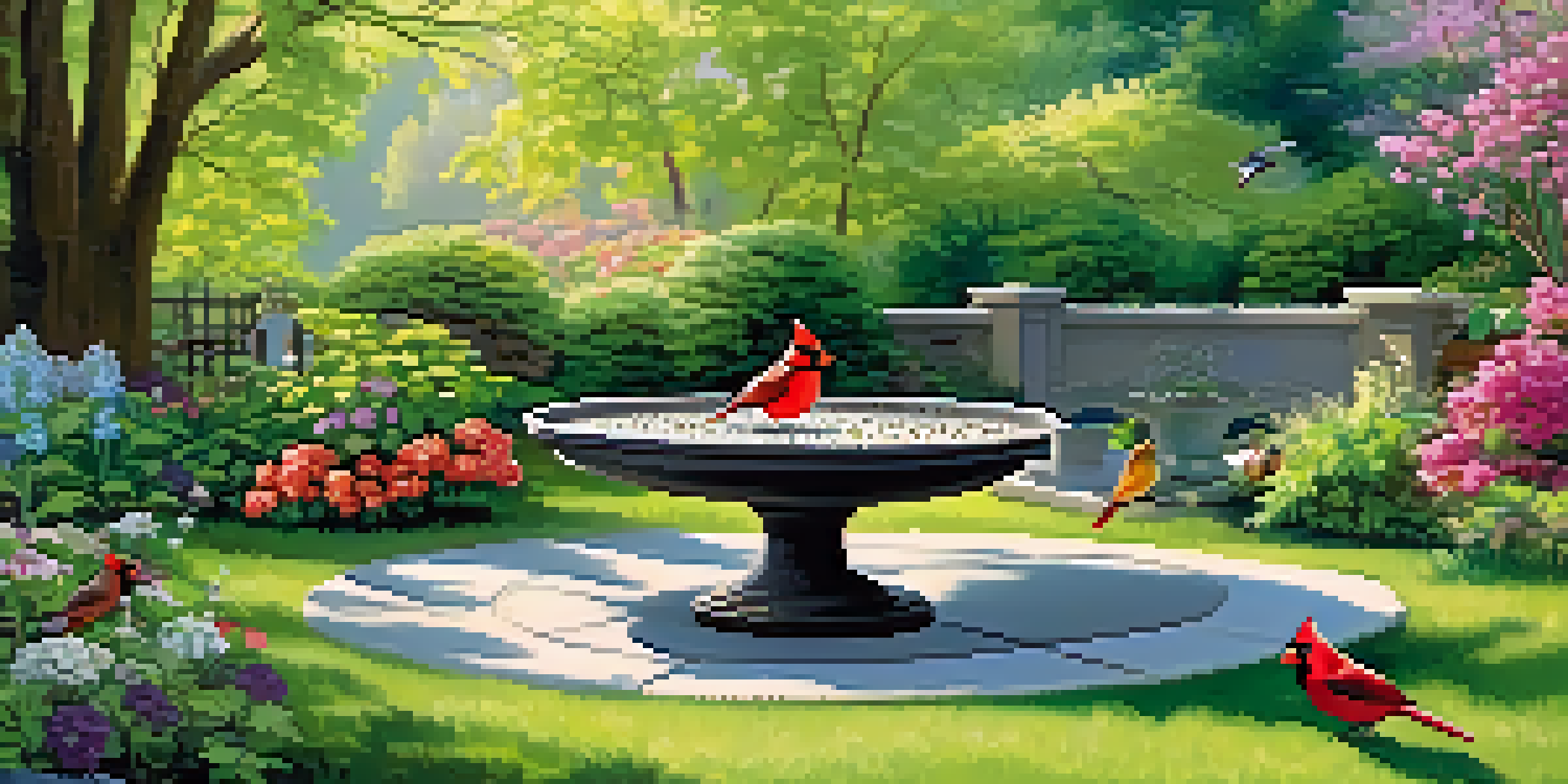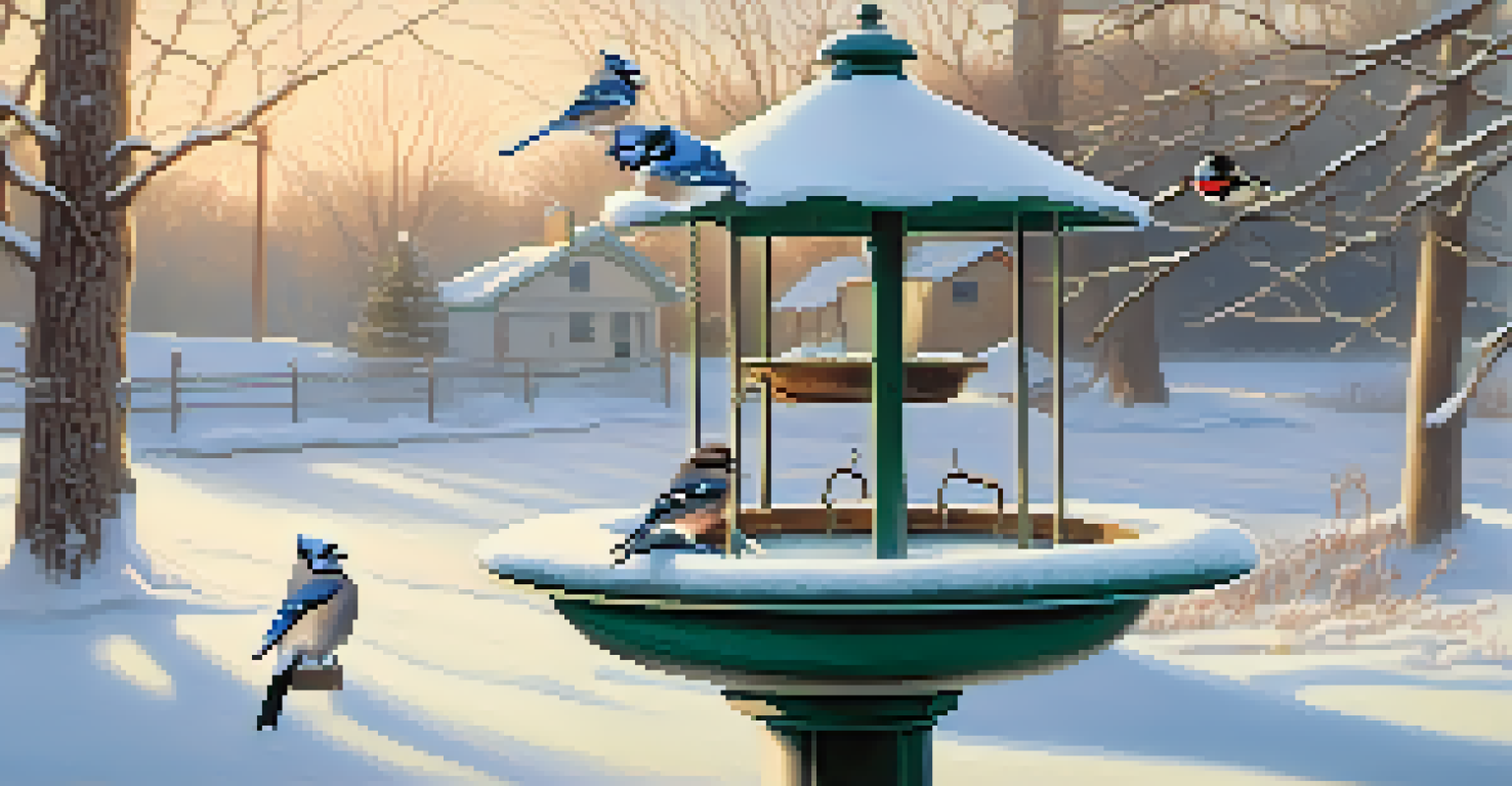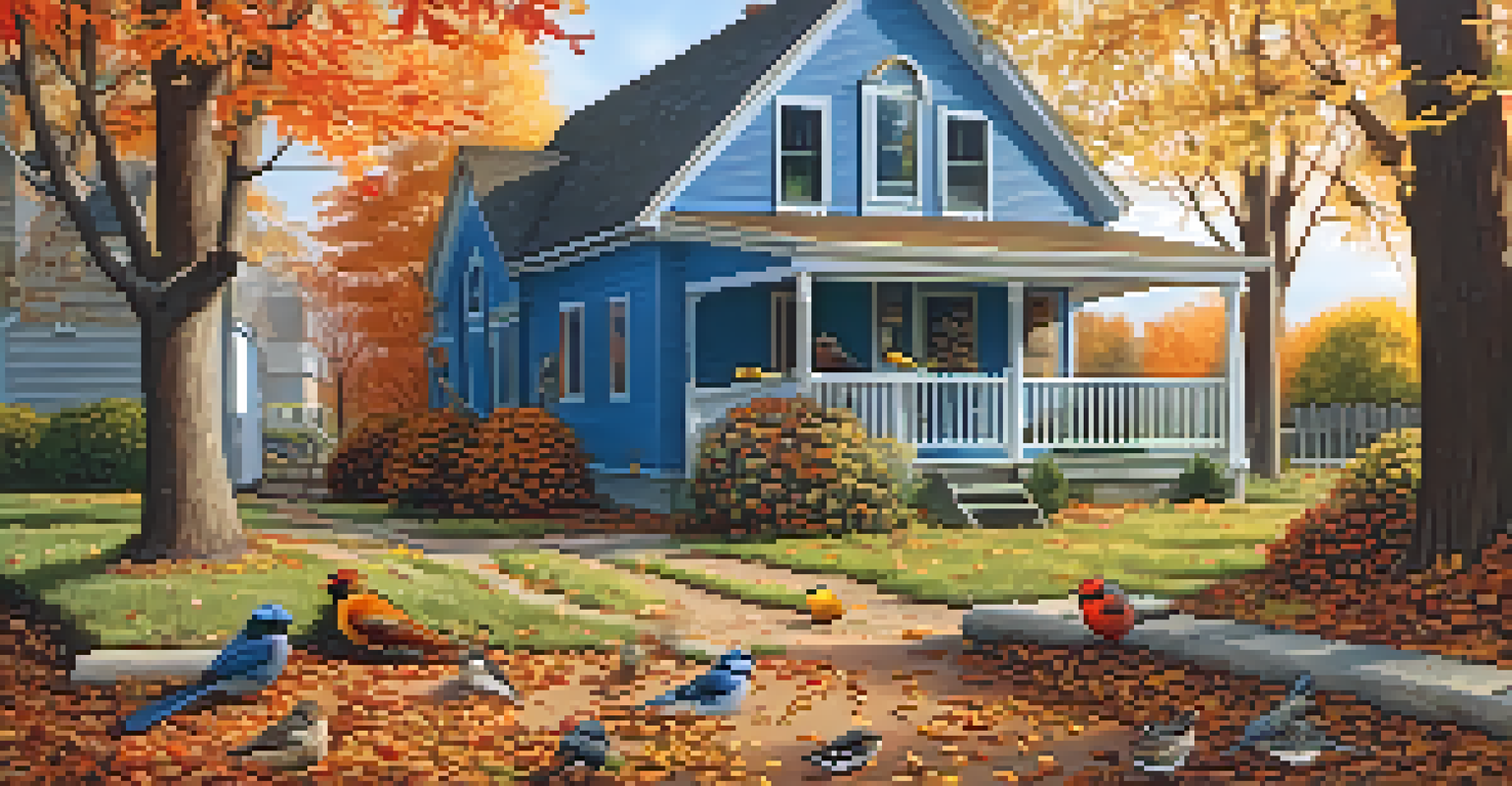Feeding Birds Year-Round: A Seasonal Guide

Understanding the Importance of Year-Round Bird Feeding
Feeding birds year-round is not just a hobby; it's essential for their survival. Birds rely on consistent food sources, especially during harsh weather conditions. By providing feed throughout the year, you help sustain local bird populations and enjoy their beauty in your garden.
The love for all living creatures is the most noble attribute of man.
Different species have varying dietary needs, which makes year-round feeding even more crucial. For instance, some birds thrive on seeds, while others prefer suet or nectar. Understanding these preferences can significantly improve your backyard birdwatching experience.
Additionally, by feeding birds all year long, you create a vibrant ecosystem right in your backyard. You'll attract various species, enriching your environment and providing opportunities for education, relaxation, and connection with nature.
Spring: Preparing for Nesting and Migration
As spring approaches, many birds return from their migration routes, eager to find food and establish nests. This is the time to switch to high-energy foods like suet or mealworms, which provide the necessary nutrients for breeding. By doing so, you can support the health of these birds during a critical time in their life cycle.

Don't forget to clean your feeders and birdbaths regularly during spring. A clean feeding area not only attracts more birds but also prevents the spread of diseases. A little effort goes a long way in promoting a healthy habitat.
Year-Round Feeding Benefits Birds
Providing food throughout the year is essential for the survival and health of local bird populations.
Offering a diverse range of foods can attract various species. Consider adding fruits and nuts to your offerings, as many birds appreciate these seasonal treats while they prepare for nesting.
Summer: Supporting Breeding Season
In summer, birds are busy raising their young, and they need plenty of food to sustain their energy levels. Continue providing high-energy foods, and consider introducing nesting materials like twigs and grass clippings to help them build their nests. This small gesture can make a big difference in their breeding success.
In every walk with nature, one receives far more than he seeks.
During this season, it's also important to keep your feeders clean and filled. Birds are particularly vulnerable to diseases, so a clean environment is essential. Regularly changing the food and water will keep them healthy and happy.
Additionally, planting native flowers can attract insects, providing a natural food source for insect-eating birds. This creates a balanced ecosystem and enhances your backyard's biodiversity.
Fall: Preparing for Migration and Winter
As temperatures begin to drop in the fall, many birds prepare for migration while others start to look for winter food sources. This is an excellent time to stock up on seeds, particularly sunflower seeds, which are a favorite among many species. Offering high-fat foods will help birds build up reserves before the colder months.
Consider providing shelter, like birdhouses or dense shrubs, to help birds find safe resting spots during their journey. This added layer of support can be crucial for migrating birds in search of refuge.
Seasonal Feeding Adjustments Needed
Different seasons require specific types of food and care to support birds during critical life stages like nesting and migration.
Fall is also a great time to observe the changing avian population in your area. You may notice different species arriving and can adjust your feeding strategies accordingly, ensuring the right food is available.
Winter: Providing Essential Food and Water
Winter can be a challenging time for birds, as food sources become scarce. By providing a reliable supply of food, you can make a significant difference in their survival. High-energy foods like peanuts, sunflower seeds, and suet are perfect for this time of year.
It's equally important to keep birdbaths unfrozen in winter. Birds need water for drinking and bathing, even in cold weather. You can use heaters or change the water frequently to ensure it's available for them.
Creating a winter feeding strategy will not only help birds but also bring delightful winter visitors to your yard. Watching these birds flit about against the snowy backdrop can bring joy and warmth during the cold months.
Choosing the Right Feeders for Each Season
Using the right feeders can enhance your bird-feeding experience throughout the year. In spring and summer, tube feeders work well for smaller seed-eating birds, while platform feeders are excellent for larger birds and those that prefer to forage on the ground.
In winter, consider using feeders that protect seeds from snow and rain. Feeders with roofs and baffles can help keep food dry and accessible, ensuring birds can find nourishment despite the harsh conditions.
Create a Bird-Friendly Environment
Landscaping with native plants and minimizing chemical use can enhance your yard's appeal for various bird species.
Additionally, adding multiple feeder types can attract a wider variety of birds. Each species has unique feeding habits, so providing options will increase your chances of spotting different birds throughout the seasons.
Common Bird Species to Attract Year-Round
Familiarizing yourself with the common bird species in your area can enhance your bird-feeding experience. For example, cardinals are often attracted to sunflower seeds, while chickadees love suet. By knowing what local birds prefer, you can tailor your feeding strategy effectively.
In addition to attracting resident birds, you might also lure in migratory species during their journeys. Keeping a diverse array of foods available can ensure your feeders remain popular destinations for both locals and visitors.

Always keep an eye out for new visitors. You might be surprised by the variety of birds that stop by your yard throughout the year, providing endless opportunities for observation and enjoyment.
Tips for Maintaining a Bird-Friendly Yard
To create a welcoming environment for birds, consider landscaping with native plants that provide natural food sources and shelter. Native plants attract insects and provide seeds and berries, making your yard a haven for birds throughout the year.
Reducing the use of chemicals in your garden is also beneficial. Pesticides and herbicides can harm birds and their food sources. Instead, focus on natural gardening methods to create a safe space for avian visitors.
Year-Round Feeding Benefits Birds
Consistent bird feeding throughout the year supports local populations and enhances your birdwatching experience.
Lastly, maintaining a quiet and safe environment will encourage birds to visit. Minimize disturbances from pets and loud noises, allowing birds to feel secure while they feed and explore your yard.